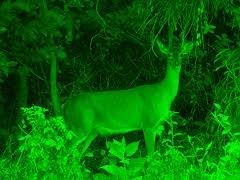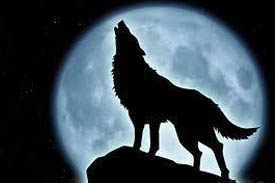Night Vision: Predators on the farm
 Over the past thirty years at this rural location the brush and trees have grown up. Along with the return to nature the predator population has increased: that includes coyotes, coy dogs, raccoons, bob cats, and assorted lesser creatures of the night that are inventive and determined to kill and eat your domestic animals-even if they are enclosed.
Over the past thirty years at this rural location the brush and trees have grown up. Along with the return to nature the predator population has increased: that includes coyotes, coy dogs, raccoons, bob cats, and assorted lesser creatures of the night that are inventive and determined to kill and eat your domestic animals-even if they are enclosed.
I am a major supporter of wildlife and my retreat abounds with nature, and I enjoy watching the balance taking forth. I am not a dedicated hunter as I was when I was in my youth, perhaps it is the slow down of older age, but I prefer to think it as wisdom learned.
The gist of this article however is a promise made to some neighbors of mine who wanted to know about night vision technology based on my owning such devices. Therefore I am addressing this article as general interest that night vision equipment may be employed beyond hunting.
Night Vision equipment originated with the military way back before the Viet Nam war days, since then it has increased with unbelievable application in technological development for police and military use, but also for civilian use. The USA is a leader in night vision technology and the upper range equipment is of course considered classified, and very, very expensive.
Our application examines the categories of night vision, commonly sold as Generation (1), (2), (3) and so forth. Each generation of technology improves visual clarity from total darkness to semi-darkness enhancement, or even daylight conditions. However as each generation is better than before- the financial cost goes up and up.
If we go to Amazon.com -night vision there exists monoculars as low as $150.00, binoculars starting at $350.00, gun sights that range into the many thousands of dollars.
I use Generation (1) Night Owl binoculars and I can see in total, absolute overcast dark of the moon easily at 100 yards with clarity to distinguish at the extreme distance what an object is and as the object draws closer, such as a deer I can distinguish in reasonable sharp focus muscle, hair and such features that leaves no question to identification.
Were I to live in the city this relative inexpensive technology would be attractive for the homeowner for security viewing-so common these days.
A careful point to remember, or you will destroy your technology, is that this is for nighttime use only. You cannot use this technology in daylight or the sensors will burn out in a flash. You cannot aim the instrument at bright street light bulbs; it is to be used for darkness-shadows and dimness.
There are two ways to use the instrument depending on the amount of darkness being pitch black, or moon-star, background street, or house lights. At my location I click on my IR Illuminator- an invisible light beam that illuminates a broad and penetrable area to enhance ambient light. It is rather like switching on a searchlight. Otherwise with moon and stars you can do fine without the IR Illuminator boost.
Some people have wonderfully sharp eyesight, like a jet aircraft pilot and some of these immortals also have wonderful natural night vision abilities. I do not. I am blind as a bat. Were I to have the gift of perfect eyes, as in my youth, recalling my jungle days I would not need the technology of aided light amplification as I do now.
Many people who seek my advice on herbs and health related issues to night blindness, especially when driving a car at night, and being slow to react to the headlights glaring at them as your two cars pass in the night. In general, Vitamin A is a boost to eye acuity. Yellow lenses reduce glare, but a light green color is what most eyes adjust to best. You may want to ask the advice of your physician on vitamin supplements and your optometrist about K2 Yellow color lenses, a proven favorite for aviators, shootists and long distant truckers.
Advertisement pictures of Generation (1 thru 3) viewing always seem to show the coyotes head as almost indistinguishable, blurry and deeply dark, the next generation up is clearer and the next even better. I think this is a bit of promotional advertising as today’s Generation (1) optics are quite clear. Obviously Generation (3) is clearer but is soundly more expensive. Reviewing my favorite source of outdoor equipment sales in Sportsmansguide.com I have noted only once did they post on their catalog a Generation (5) night vision, but it was so expensive in thousands of dollars that you and I might drool over it, but in reality we are financially forced to consider lesser options. I also note with all the input I receive from various sales that night vision equipment to the general public is in decline and there is less and less available. Usually following a war, as the Army winds down, more surplus becomes available- but not so in Night Vision, at least in practical use for you and me.
Weight is a consideration. The Binoculars are heavier than daylight optics, therefore if you are on a night hike this could be a consideration and perhaps a monocular device needs consideration. Varmint hunters would do best to consider most of the night vision in the lesser categories. Gun Sights are really designed for mounting on a flat plane such as the AR rifle configuration. Some of these optics are really heavy and when you combine the weight of the rifle, ammunition, slings, lasers, lights, bi-pods ad etc. you can easily reach 12 or more lbs. For me this is too much weight and I seek a smaller caliber and lesser weight varmint firearm consistent with the range of the optics. There is no sense having a 500-yard rifle with 80-yard night optics.
In my situation I have mounted this varmint night scope on a .22 LR rifle. Rambo may consider this unacceptable, however I am investigating other lightweight rifles suitable as a compromise.
An added consideration is to install “Quick Disconnect” scope mounts so that you can use a day scope and switch at night to a night scope for varmints with no loss of zero on target.
Night Vision binoculars usually come with their own padded carry case – especially for day carry as they seal out light. Riflescopes may not have a day carry case that would be imperative to have if you are carrying both day and night optics.
I must stress that all these night optics have cups at the objective lenses to seal out light – daylight and bright lights that will irreparably damage the internal mechanics. There is a likely factor that these cups slide off at an inopportune time. Perhaps using masking or black tape around the barrel of the optic so that the cup more firmly attaches would be a consideration. For daytime use, a carry bag is necessary.
The night optics all have a 3-volt battery for power. These batteries are best removed when not in use as they generate large amounts of heat and if the device is accidentally turned on the optic could be damaged. Always carry a spare fresh battery with you.
The night vision objective lens cup cover has a small pinhole in the center. This is for initial personnel alignment. You may sit in a darkened room and at a 20-foot distance, adjust the eyesight optic in rotation to achieve maximum sharpness. My eyes require a different setting than yours and this room adjustment procedure is necessary since unadjusted – unaligned eyepieces make everything blurry and you think the device is damaged. It is not.
Once outside in the dark the center focus knob is rotated to obtain a sharp image of the target. The field of view – the width of viewing – increases with distance. Just like a day scope the width or breadth of viewing increases with less magnification to begin with. Higher magnification diminishes the width of viewing.
If you are rural, as an example, and want to see the deer in a field at a distance, increased magnification is better. If you are in a security mode inside a warehouse, lesser magnification may be more beneficial. Magnification usually starts at 1X up through 5X.
Were I to recommend the first step, I would suggest starting with an inexpensive monocular type of night vision and select on the 1X to 5X options in a Generation (1).
Then as interest grows move up. Everyone sells these night vision devices but I must caution that small-unknown dealers often re-market used, damaged, or repaired devices. I would stay with a large reputable distributor such as Amazon.com or Sportsmansguide.com as their return policy is:” No argument”.
Some night vision devices allow you to connect your camcorder to the unit. This is a nice feature but I think best set up on a tri-pod for stability as vibration really blurs the image in the camcorder. Of course quality – expensive units may not.
Read the directions carefully. Best in viewing,
God Bless,
Old Timer
COPYRIGHT: 2011, Back2theLand.com, all rights reserved.



